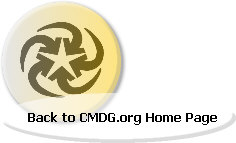The Canadian Movement Disorder Group
MYOCLONUS
Definition: A sudden "Shock" like muscular movement
Myoclonus can be Classified By:
1) The Electrophysiologic Phenomenon (certain electrical characteristics)
Positive Myoclonus: a contraction of a group of muscles lasting < 300 msec .
Negative Myoclonus (asterixis): a sudden relaxation of a group of muscles.
2) Classification by the Anatomical Origin Electical Discharge
From the surface of the brain (Cortical Myoclonus ).............Epileptic
From deeper within the brain (Subcortical Myoclonus)
From an electrical impulse within the spinal cord ( Spinal or Segmental Myoclonus)
From an electrical impulse within a peripheral nerve (Peripheral Myoclonus eg. hemifacial spasm)
3) Classification byBody Parts Involved
Focal
If only one body part is affected myoclonus is called"focal". (eg. myoclonic jerks of 1/2 the face ( "hemifacial spasm" ), or when the eyes are affected ("Opsoclonus").
Segmental
If only one segment of the body is affected myoclonus is called"segmental" (eg. hiccoughs ).
Multi-focal
If multiple areas body are affected by myoclonus at different times it is called "Multi-focal"(eg. poly-mini-myoclonusis a condition where very small myoclonic jerks occur in many different parts of the body in an almost continuous fashion).
Generalized
If the entire body is affected then myoclonus is called
"Generalized". eg. a startle response.
4) Classification by Timing Pattern
Myoclonus can occur in a solitary pattern ("isolated myoclonus" ), in repetitive ("rhythmicmyoclonus") patterns, just as one falls asleep ( "hypic jerks"), during sleep ( "nocturnal myoclonus") or can create circular ("oscillatory myoclonus" ) patterns of movement.
5) Classification by Myoclonic Triggers
Myoclonic jerks may be triggered by a variety of simuli ( "stimulous sensitive myoclonus") including sound, touch, frightor startle, and flashes of light.
Frequently myoclonic jerks occur during an active voluntary muscle contraction ( "action myoclonus" eg after lack of oxygen to the brain ( "Post anoxic myoclonus").
6) Classification as to Cause
Physiologic Myoclonus
Myoclonus can occur as a normal phenomenon. Types of normal ("physiologic") myoclonus include;hypic jerks (myoclonus as a person falls asleep), startle response, exercise or anxiety inducedmyoclonus, and hiccoughs.
Primary Myoclonus
Primary myoclonic conditions are conditions that result in myoclonus that are not secondary to some other medical problem. These primary forms of myoclonus can be inherited (eg. Essential Myoclonus), or idiopathic (no known cause).
Secondary Myoclonus
There is a large number of varied conditions that can cause myoclonus as a symptom. These include various types of seizures (epilepsy), inherited disorders of metabolism, disorders of brain fatty materials leading to excess build up of these materials (Storage diseases (eg Lafora body disease), types of slowly progressive neurologic condions that may or may not run in families (eg. spinocerebellar degenerations, basal ganglia degenerations, mitochondrial disorders), and other dementing illnesses (Jakob-Cruetzfeldt disease, Alzheimers disease). Infectious diseases of a variety of types (eg. viral encephalitis, AIDS, syphillis, "mad cow" disease) can have myoclonus as part of their symptom complex. Lack of oxygen can result in damage to nerve cells and lead to myoclonus (post anoxic myoclonus). Local trauma, or other types of injury to the brain, spinal cord, or peripheral nerves can lead to focal myoclonic jerks.
Treatment of Myoclonus
The usual medications used to suppress myoclonus include; Valproic acid, Clonazepam, Dilantin, Lamotrigine, 5 Hydroxy-Tryptophan.
Eg. Botulinum Toxin for Hemifacial Spasm
Eg. decompressive surgery to remove pressure due to a blood vessel on the nerve to the facial muscles for hemifacial spasm.
